While we were in New Iberia Louisiana we had the opportunity to visit Shadows-on-the-Teche. It was recommended highly by a new friend, Judy Bishop. Thank you, Judy, we truly enjoyed seeing and learning about this 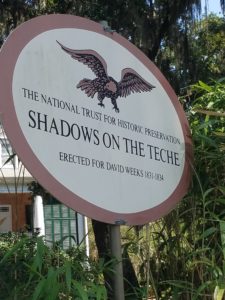 beautiful piece of history. We were fortunate to arrive and be the only ones to occupy the tour guides attention.
beautiful piece of history. We were fortunate to arrive and be the only ones to occupy the tour guides attention.
The cost to tour the house:
Adults (16 to 64) – $10.50
Seniors (65 and up) – $8.50
Students (6-17) – $6.75 (must show school ID)
They do offer discounts for those in the military, AAA and groups. They also offer free admission for those who belong to the National Trust for Historic Preservation and Friends of the Shadows. In addition, you can tour just the gardens for a discounted rate but we highly recommend shelling out the additional few dollars to tour the house as well.
They are opened year-round and offer guided tours Monday through Saturday, except for major holidays. Hours of operation are 9am to 5pm with the first tour starting 15 minutes after the hour starting at 9:15am to 4:15pm. The tours last around 45 minutes and begin at the visitor’s center which is located across the street from the house. There is a good introductory video prior to the tour.
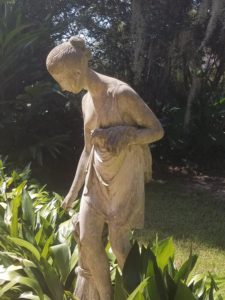 The grounds are beautiful and I could take a lot of pictures on the outside. At the time of our visit they were having issues with two boars that were loose. They were tearing up the garden and at first they thought it was another type of animal until they place a camera outside and caught them on tape. The tour guide thought that someone had gotten two boars for a pig roast, or what they call in Louisiana a Cochon De Lait. The boars were not only causing the Shadows issues but quite a few other residences along the bayou. She told us that the neighbors and such decided whoever caught them could have them for their own Cochon De Lait.
The grounds are beautiful and I could take a lot of pictures on the outside. At the time of our visit they were having issues with two boars that were loose. They were tearing up the garden and at first they thought it was another type of animal until they place a camera outside and caught them on tape. The tour guide thought that someone had gotten two boars for a pig roast, or what they call in Louisiana a Cochon De Lait. The boars were not only causing the Shadows issues but quite a few other residences along the bayou. She told us that the neighbors and such decided whoever caught them could have them for their own Cochon De Lait.
As far as getting pictures inside, they do not allow them being taken in the house. The tour guide stated the reason for this is so that someone could not case the joint. I guess that could be true, but being from Williamsburg, I know that flash photography is not allowed in the Colonial Williamsburg houses due to the damage the continuous exposure of light to antiques. At least that is what someone that worked there said during a tour. Either way, if you are photography bug like I am, be prepared to turn the camera off during the time inside the house.
Shadows-on-the-Teche was the family home of four generations of the Weeks. Construction on the Shadows began in 1831 and was completed in 1834 by David Weeks. David and his wife were living at their sugar plantation the Grand Cote but this location was thought to be too remote for the growing family. They first lived in a house on the Bayou Parc Perdue for four years before buying the 158 acres located on the Bayou Teche and began the building of this white columned brick house. In the 1830’s there were only two other brick houses located on the Bayou Teche, and this house was built in the style of a Louisiana Colonial. It was interesting to see that there were no internal stairs to the two-story house.
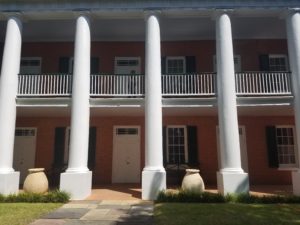 The history of the house and the relics left to the society were very interesting. There were portraits of the family throughout the plantation lending to the mystique of those who had dwelt among the walls of this great house. It was sad to learn that upon the completion of the house, David never lived there. With the house, nearly complete in 1834, David left on a sea voyage seeking a cure for an unknown disease that he had. He died on August 25, 1834 during his search for a solution. After his death, an inventory was taken and it was found that his estate was worth $95,700.00.
The history of the house and the relics left to the society were very interesting. There were portraits of the family throughout the plantation lending to the mystique of those who had dwelt among the walls of this great house. It was sad to learn that upon the completion of the house, David never lived there. With the house, nearly complete in 1834, David left on a sea voyage seeking a cure for an unknown disease that he had. He died on August 25, 1834 during his search for a solution. After his death, an inventory was taken and it was found that his estate was worth $95,700.00.
Mary was now left with the task of running and overseeing the estate along with those in service. There were approximately 150 of men, women and children slaves between the properties and she was responsible for making sure that they were cared for with enough food and clothing. It was interesting to learn that although she was a woman, she was responsible for the estate, with only some minor assistance from her brother. Mary remarried in 1841 to Judge John Moore and the marriage contract kept their properties separate, although there were times that Mary sought John’s advice on running the estate. It was noted that during the 1840’s and 1850’s there was prosperity for both parties.
William, the oldest son of David and Mary became the manager of the sugar plantation in 1844 at the young age of 19. He was responsible for numerous people, working long hours to watch over all aspects of the operation. It was only two years later that he married his cousin, Mary Gorham Palfrey on July 7, 1884. After they were married, they resided at the sugar plantation, Grand Cote. Mary and William had five children, with only two surviving childhood. It was interesting to learn, that during the Civil War, to protect his interest in a group of Negros, he moved them to Texas. He believed that Texas would not be invaded and relayed this in a letter to John Moore in 1863.
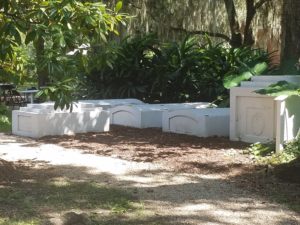 The Civil War brought about a lot of changes and suffering. It was during this time that Mary Moore died on December 29, 1863 peacefully in her sleep while Union troops occupied both her house and land. She was buried in the gardens of the Shadows. William and his family heard of her death in January of 1864 but were unable to return until after the war. Upon return, William and his family made the Shadows their home, however they still went and resided at the Grand Cotes plantation during grinding season of the sugar, which was still their main crop. John Moore lived until 1867. He was buried alongside of Mary in the gardens.
The Civil War brought about a lot of changes and suffering. It was during this time that Mary Moore died on December 29, 1863 peacefully in her sleep while Union troops occupied both her house and land. She was buried in the gardens of the Shadows. William and his family heard of her death in January of 1864 but were unable to return until after the war. Upon return, William and his family made the Shadows their home, however they still went and resided at the Grand Cotes plantation during grinding season of the sugar, which was still their main crop. John Moore lived until 1867. He was buried alongside of Mary in the gardens.
With the sugar business being located at Grand Cotes, William still resided there during the grinding season. Both Mary and William died at the Shadows. After succumbing to a long illness, Mary died in 1888 and William died in 1895 only three months after his first grandchild, William Weeks Hall was born, child of Gilbert Hall and Lily Weeks. This grandson, born on Halloween night in 1894, would find himself to be the last Weeks to reside in the Shadows-on-the-Teche. William Weeks Hall was aware of his obligations to both the history and the future memory of his family and their home from the time he reached maturity. At the age of twenty-five, Hall bought out his aunt’s share of the house for $7,500.00 and became sole owner.
Although Hall had a talent for art, having been awarded several scholarships to the Pennsylvania Academy of Fine Arts and could study in Paris and London, he returned to his home at the Shadows. With just a few interruptions, Hall made the Shadows his home until his death. His artistic abilities allowed him to create the stunning gardens surrounding the house. If you think about it, he lived within his canvas. In addition, you can see some of his artwork in what became his studio within the walls of the Shadows.
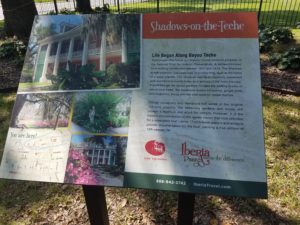 As he knew that this house must be kept intact and be an example of history, he sought out a way to accomplish this through different avenues, even the National Park system to no avail. He then sought out help to preserve the Shadows by inviting the rich and famous of his day such as Lyle Saxon, Henry Miller, Cecil B. DeMIlle, D.W. Griffith, Emily Post and even Walt Disney to stay at the Shadows. It was not until shortly before his death, that he was finally able to find an organization to fulfill his desire to preserve the house, the National Trust for Historic Preservation. They were able to open the site to the public in 1961.
As he knew that this house must be kept intact and be an example of history, he sought out a way to accomplish this through different avenues, even the National Park system to no avail. He then sought out help to preserve the Shadows by inviting the rich and famous of his day such as Lyle Saxon, Henry Miller, Cecil B. DeMIlle, D.W. Griffith, Emily Post and even Walt Disney to stay at the Shadows. It was not until shortly before his death, that he was finally able to find an organization to fulfill his desire to preserve the house, the National Trust for Historic Preservation. They were able to open the site to the public in 1961.
If you are ever in New Iberia, I highly recommend stepping back into time to witness the sights and sounds of a gone by era and tour the Shadows-on-the-Teche. For further information of this site please follow the link below.
More to come and travel on!

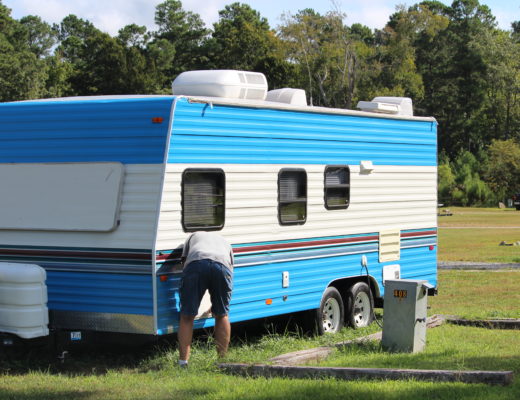
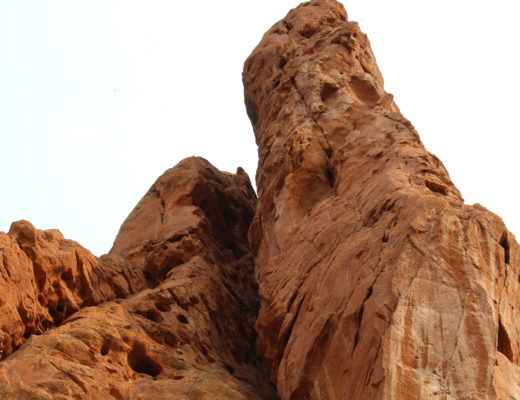
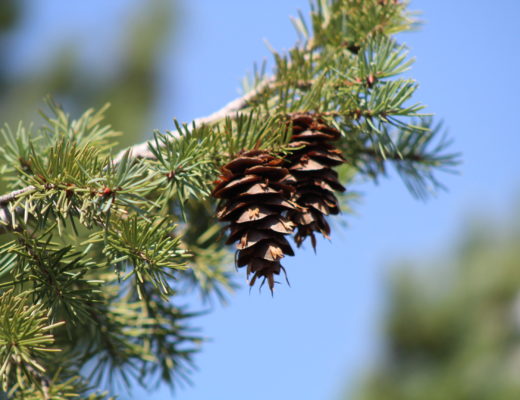
No Comments